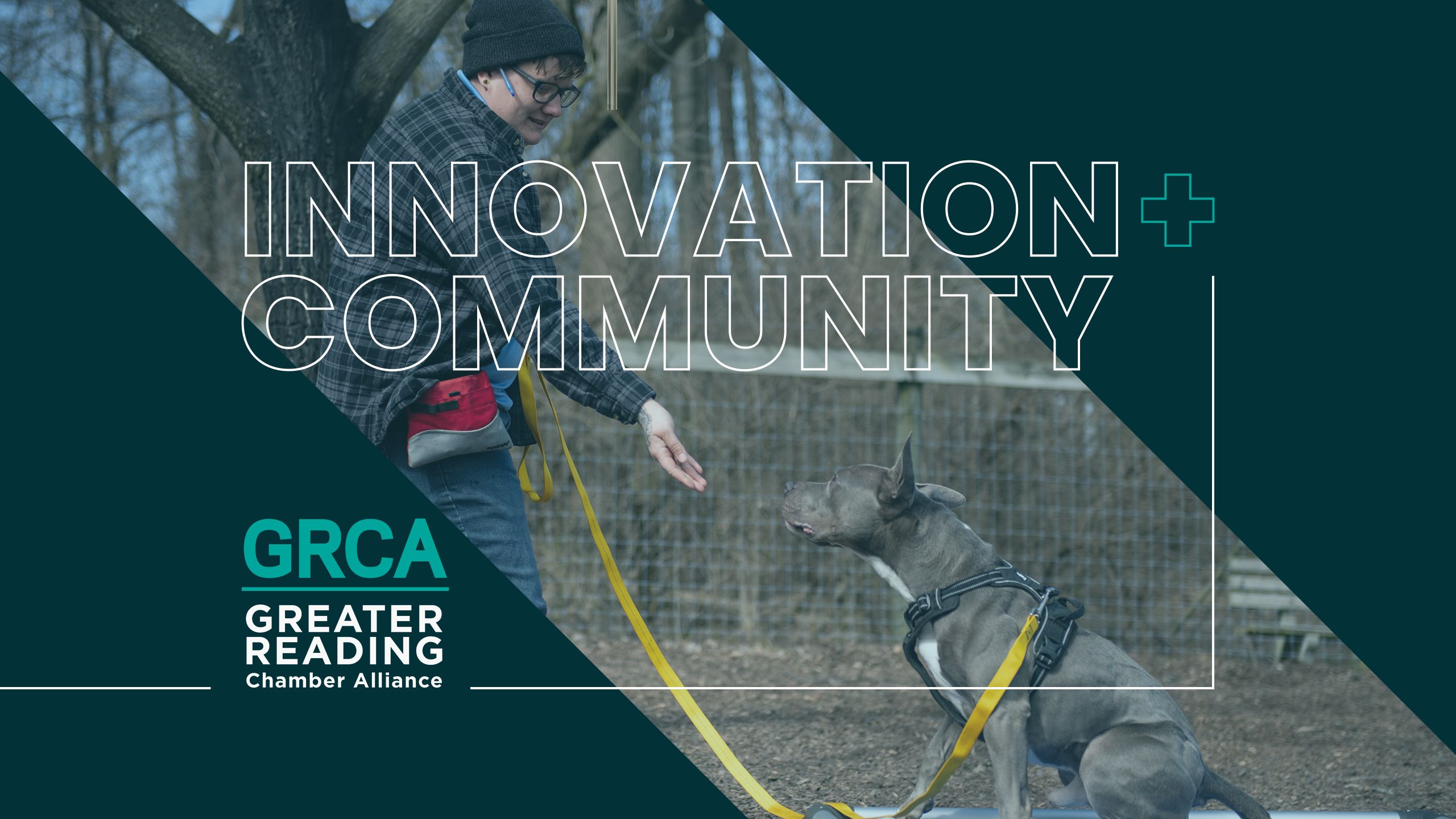
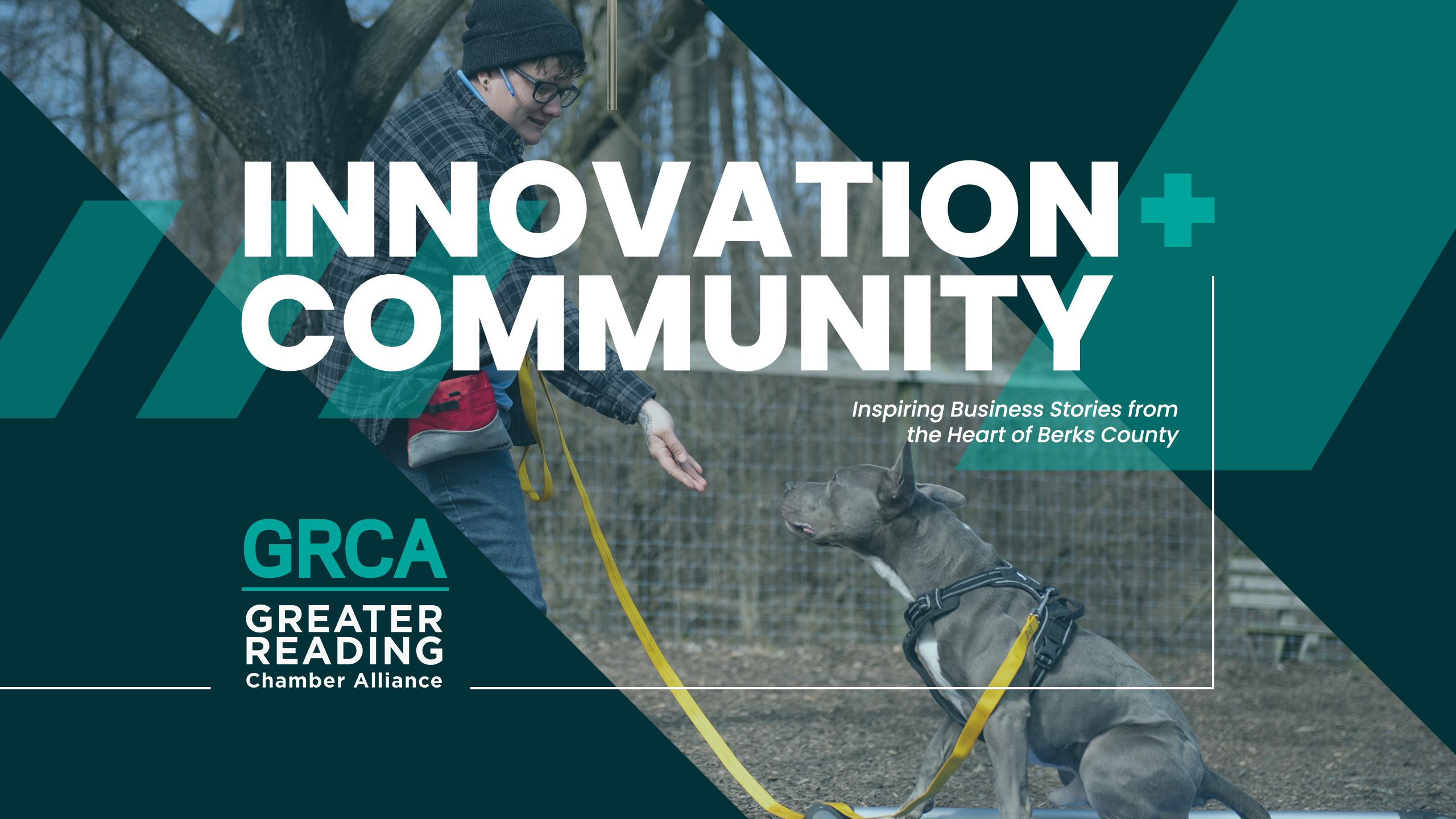

If someone approached you and offered to buy your pet, what would you say? The vast majority would probably say, “Thanks, but no thanks. They are not for sale.”
Relationships between humans and animals have evolved over thousands of years and have only strengthened over time. The bond we share with our pets is priceless; both two-leggers and four-leggers benefit from companionship, protection and love. But that perfect picture can be threatened by loss, confusion, tragedy or fear—and that’s when the Animal Rescue League of Berks County steps up to the plate. Infused with grit and determination, the Animal Rescue League’s story tells a “tail” about the incredible, far-reaching impacts that flow through communities when people and pets are united by a purpose.



If someone approached you and offered to buy your pet, what would you say? The vast majority would probably say, “Thanks, but no thanks. They are not for sale.”
Relationships between humans and animals have evolved over thousands of years and have only strengthened over time. The bond we share with our pets is priceless; both two-leggers and four-leggers benefit from companionship, protection and love. But that perfect picture can be threatened by loss, confusion, tragedy or fear—and that’s when the Animal Rescue League of Berks County steps up to the plate. Infused with grit and determination, the Animal Rescue League’s story tells a “tail” about the incredible, far-reaching impacts that flow through communities when people and pets are united by a purpose.
The Story Behind Animal Rescue League
The Animal Rescue League’s story begins with a woman named Mary Archer, a Berks County socialite, humanitarian, and lifelong activist for animal welfare. Dissatisfied with the practices at that time of the local humane society, Mary spent most of her family’s wealth to organize and charter her own animal support organization. In 1952, the Animal Rescue League of Berks County was born.
Throughout the years, the Animal Rescue League grew, steadily adding spaces to the humble, 10-acre farm property that included kennels, an animal van, cat colonies and a surgery center.
But the indomitable spirit that Mary instilled into the Animal Rescue League was put to the test in 2017 when heartbreaking news broke that the shelter had accidentally euthanized two pet cats before they could be connected with their owners due to extreme overcrowding at the shelter. The cases occurred less than a month apart.
A firestorm ensued. Everything the Animal Rescue League did came under the sharp scrutiny of the local media and the community.
Change was needed, and fast.
In 2018, the Animal Rescue League announced the adoption of a “no-kill” philosophy. It would no longer euthanize treatable and adoptable animals when it ran out of kennel space.
Everything was up for reevaluation by the shelter’s leadership, from its euthanasia policies to its operational model to its staffing and Human Resource practices.

Under the leadership of Alexis Pagoulatos, who took up the mantle of Executive Director in 2019, the Animal Rescue League has been steadily marching towards a model of excellence in both animal welfare and community relationships. Among other changes, the Animal Rescue League dramatically increased its cat-live release rate with the model change from 44% in 2017 to 85% in 2018 and its dog-live release rate from 86% in 2017 to 96% in 2018.
Guided by a philosophy of transformation that focuses on “both ends of the leash,” the Animal Rescue League is fast becoming a national example of how a nonprofit and the community it supports can build a symbiotic and powerful relationship.
Here’s what it looks like…
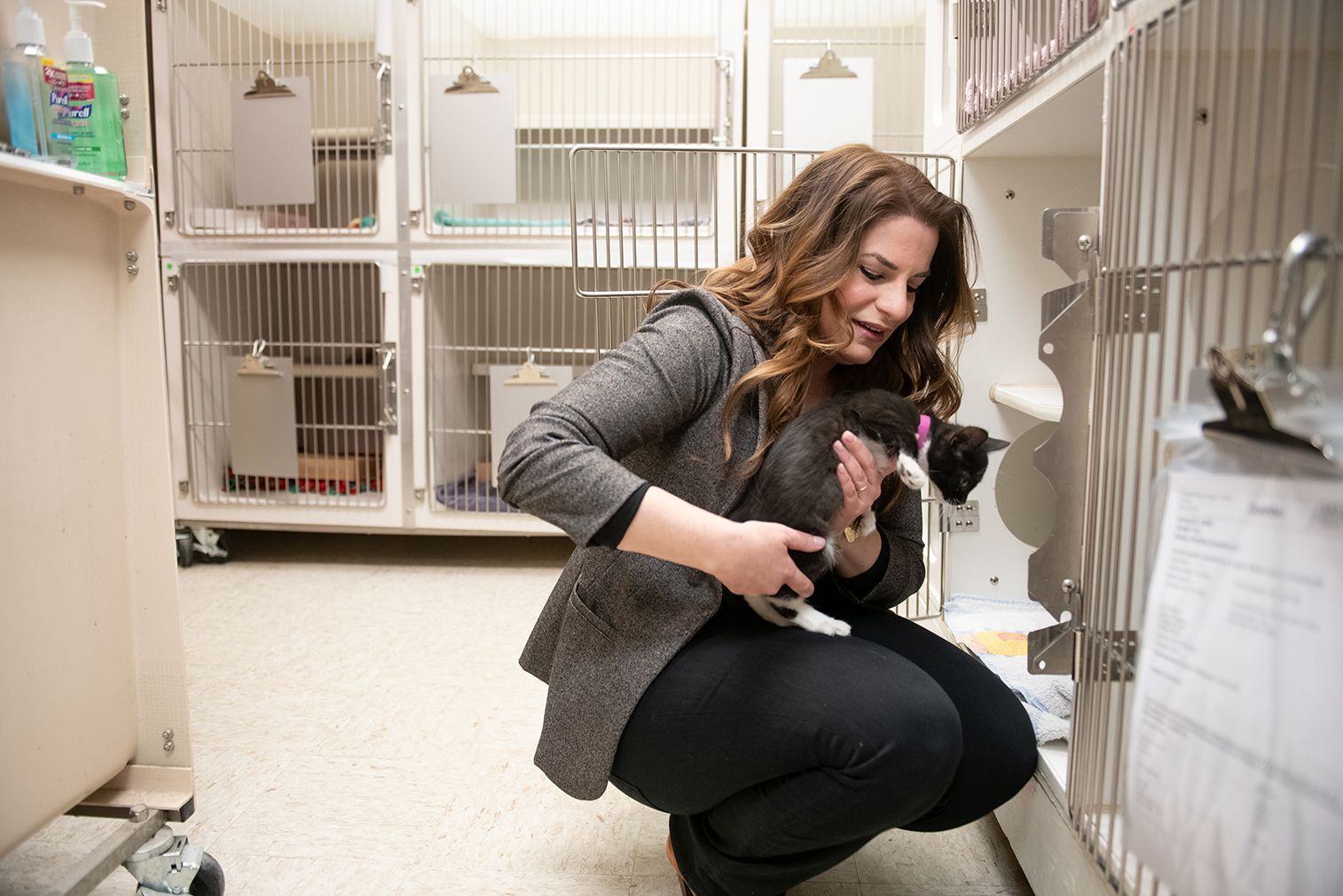
The Story Behind Animal Rescue League
The Animal Rescue League’s story begins with a woman named Mary Archer, a Berks County socialite, humanitarian, and lifelong activist for animal welfare. Dissatisfied with the practices at that time of the local humane society, Mary spent most of her family’s wealth to organize and charter her own animal support organization. In 1952, the Animal Rescue League of Berks County was born.
Throughout the years, the Animal Rescue League grew, steadily adding spaces to the humble, 10-acre farm property that included kennels, an animal van, cat colonies and a surgery center.
But the indomitable spirit that Mary instilled into the Animal Rescue League was put to the test in 2017 when heartbreaking news broke that the shelter had accidentally euthanized two pet cats before they could be connected with their owners due to extreme overcrowding at the shelter. The cases occurred less than a month apart.
A firestorm ensued. Everything the Animal Rescue League did came under the sharp scrutiny of the local media and the community.
Change was needed, and fast.
In 2018, the Animal Rescue League announced the adoption of a “no-kill” philosophy. It would no longer euthanize treatable and adoptable animals when it ran out of kennel space.
Everything was up for reevaluation by the shelter’s leadership, from its euthanasia policies to its operational model to its staffing and Human Resource practices.
Under the leadership of Alexis Pagoulatos, who took up the mantle of Executive Director in 2019, the Animal Rescue League has been steadily marching towards a model of excellence in both animal welfare and community relationships. Among other changes, the Animal Rescue League dramatically increased its cat-live release rate with the model change from 44% in 2017 to 85% in 2018 and its dog-live release rate from 86% in 2017 to 96% in 2018.
Guided by a philosophy of transformation that focuses on “both ends of the leash,” the Animal Rescue League is fast becoming a national example of how a nonprofit and the community it supports can build a symbiotic and powerful relationship.
Here’s what it looks like…
Meet Mary Archer
Throughout her life, Mary Archer organized or led numerous historic initiatives that encouraged social change, including the local Belgian Relief Committee, the Berks County Prison Economy Committee and a fight to preserve Penn's Commons from development efforts. She was appointed as the first woman to sit on the Democratic National Committee and was the First Chairman of the Democratic Women’s Club of Berks County.
Mary’s efforts were especially remarkable considering that, during the first half of the 19th century, women had limited rights. They were typically not allowed to make contracts or wills, could not buy or sell property, had little control of their earnings in most situations, and were discouraged from acting politically.
In the 1930s one of her male colleagues said about Mary: “‘I believe that she is the most loved, the most feared and by some few the most hated woman in Reading.”
You can read more about Mary Archer’s fascinating life by clicking here.

Meet Alexis Pagoulatos
Alexis Pagoulatos grew up in New Jersey and attended Lehigh University in Pennsylvania. Prior to her career change into animal welfare as Executive Director at Routt County Humane Society in Steamboat Springs, Colorado and later accepting the role of Executive Director at Animal Rescue League in July of 2019, she had built her career in Public Relations. As Alexis learned more about the new model the Animal Rescue League was seeking to implement, she felt there was a lot of hope and opportunity on the horizon for the organization.
“If you're not looking for a changemaker, then I'm not the candidate for you,” Alexis had warned her interviewers. “Because when I do come in, I want to bring systemic solutions to systemic problems.”
And that’s exactly what she’s done. Alexis and her team are quickly becoming leaders and changemakers as they transform the Animal Rescue League from a simple shelter into a thriving animal welfare community center. Not only that, they’re telling their stories to the community to shift perspectives on what’s possible in Berks County and beyond, and sharing what level of support it takes to run a humane sheltering model that reflects the community’s values.
“Our founder, Mary Archer, was also a humanitarian. If she could see us now, and how we’ve come into this full circle of animal care that also includes compassion for people… I hope she’d be proud of where we are today.”

The Animal Rescue League had to “build the plane while flying” as it transformed its operational model. A big part of achieving its new, no-kill philosophy meant diversifying from a crew of generalists who did a bit of everything to a team of specialists.
“It doesn't take as many resources to euthanize animals as it does to get them in, board them, clean them, feed them, provide the vet care and surgeries they require, assess them behaviorally, and figure out who they are and what outcome path they would be best suited for. And then there’s the search for adoptive homes,” explains Alexis. “So, what was one step for many animals became 10 steps. It required a lot of changes, truly, a 180-degree change in operations and community engagement.”
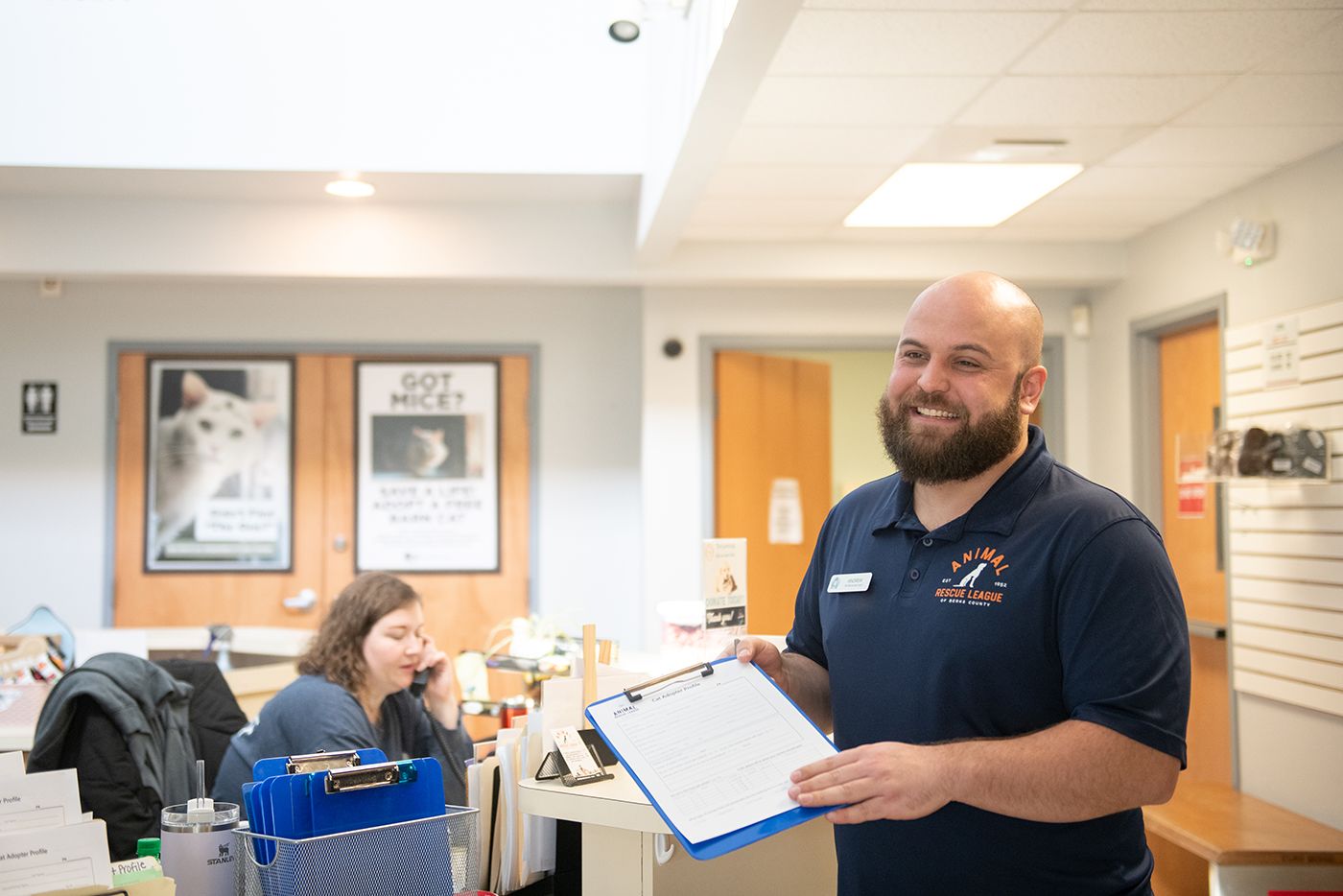
Receiving over 100,000 incoming phone calls annually, requests for help and animals continued to pour into the 24/7/365 facility while the Animal Rescue League leadership team worked on restructuring, streamlining and training, but Alexis and her team stayed the course.
Between 2019 and 2022, the staff grew from about 25 members to 60, including eight bilingual staff members throughout different departments, as programming and capabilities expanded to better meet community need, particularly throughout the COVID pandemic. In addition to receiving general, organization-wide training and onboarding, employees work in specialized departments where they can explore their talents and expand on areas of ability and interest. Collectively, the departments cover a wide range of support services for animals and their humans alike.
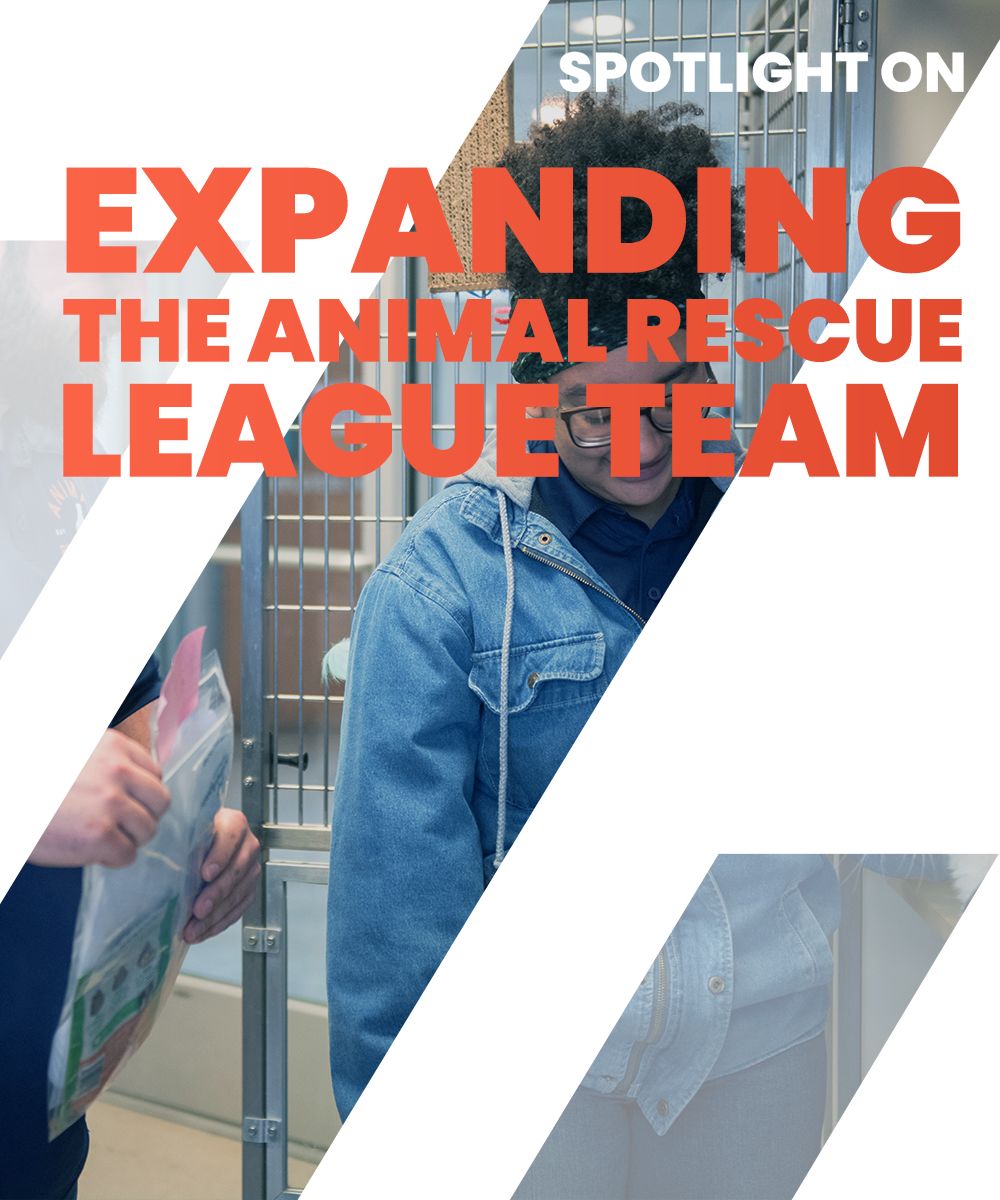

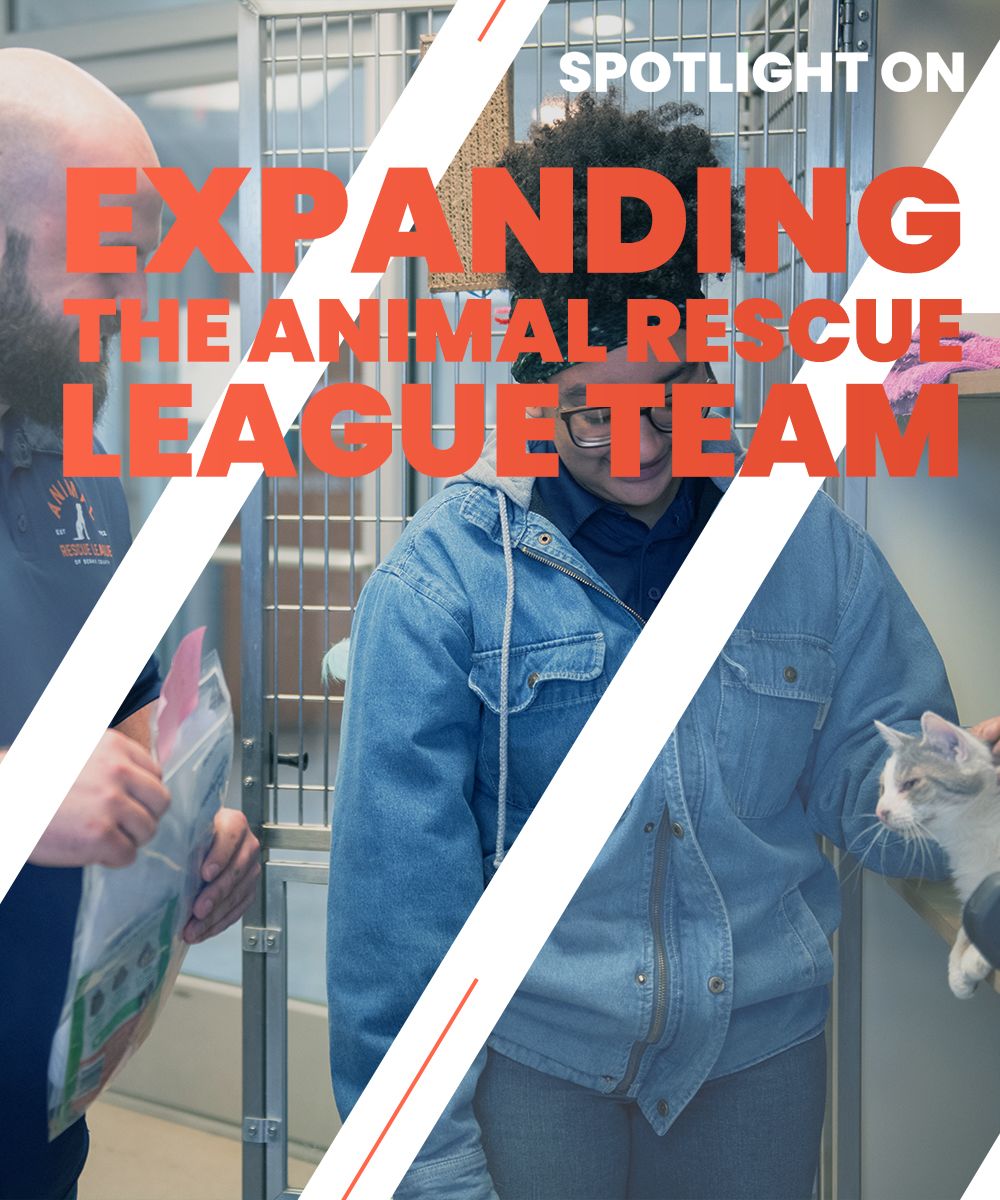
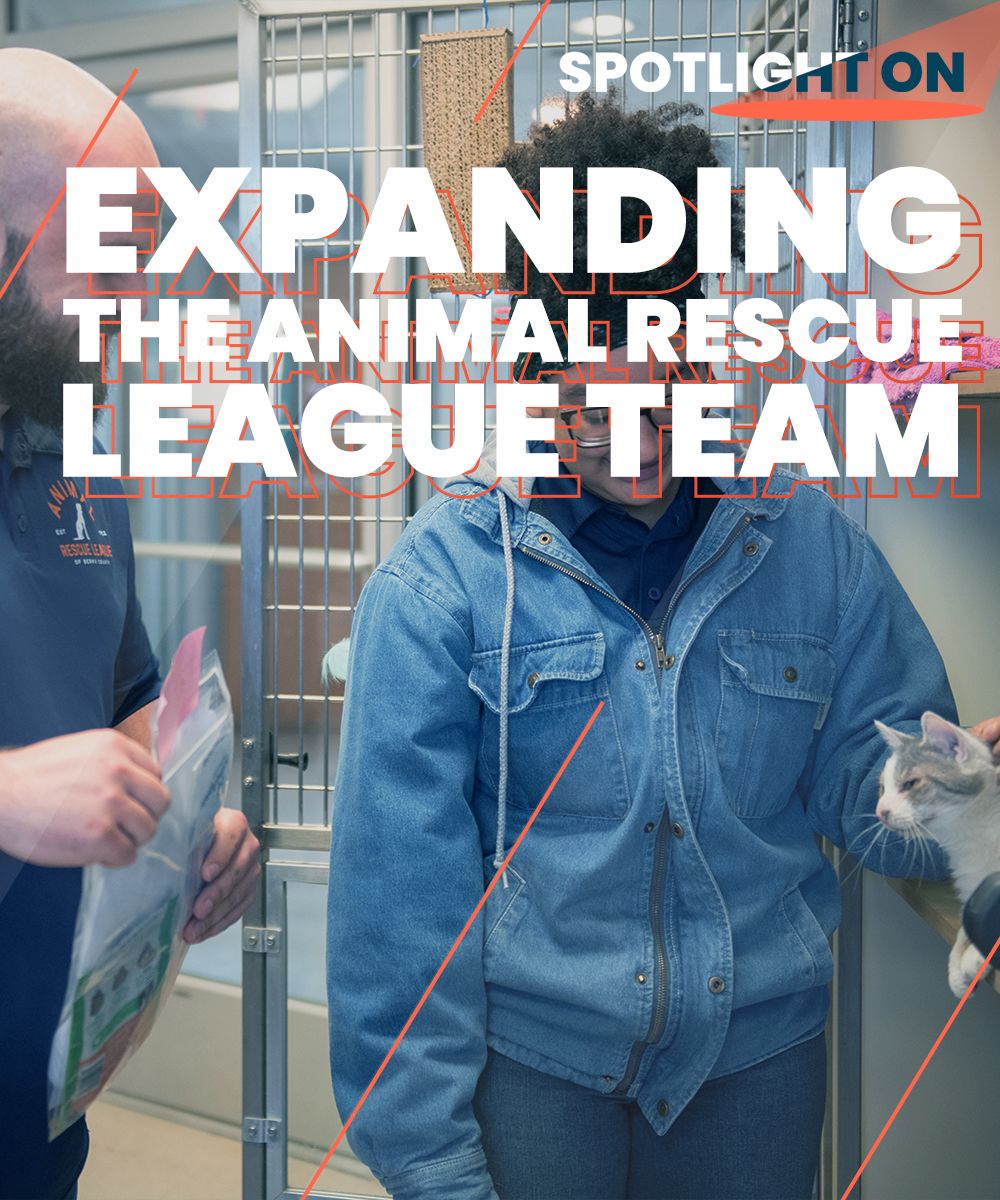
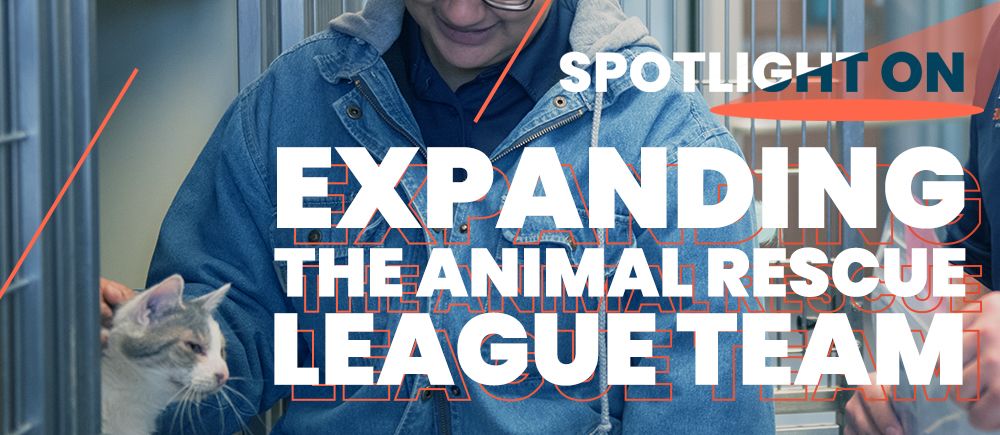
The Animal Rescue League had to “build the plane while flying” as it transformed its operational model. A big part of achieving its new, no-kill philosophy meant diversifying from a crew of generalists who did a bit of everything to a team of specialists.
“It doesn't take as many resources to euthanize animals as it does to get them in, board them, clean them, feed them, provide the vet care and surgeries they require, assess them behaviorally, and figure out who they are and what outcome path they would be best suited for. And then there’s the search for adoptive homes,” explains Alexis. “So, what was one step for many animals became 10 steps. It required a lot of changes, truly, a 180-degree change in operations and community engagement.”

Receiving over 100,000 incoming phone calls annually, requests for help and animals continued to pour into the 24/7/365 facility while the Animal Rescue League leadership team worked on restructuring, streamlining and training, but Alexis and her team stayed the course.
Between 2019 and 2022, the staff grew from about 25 members to 60, including eight bilingual staff members throughout different departments, as programming and capabilities expanded to better meet community need, particularly throughout the COVID pandemic. In addition to receiving general, organization-wide training and onboarding, employees work in specialized departments where they can explore their talents and expand on areas of ability and interest. Collectively, the departments cover a wide range of support services for animals and their humans alike.
Animal Care & Behavior
Animal care never stops, and this dedicated team focuses on creating clean, safe and nurturing environments while working with the animals to discover who they are and what type of home they would be best suited for. They also tend to the animals’ mental well-being with daily enrichment activities to reduce their stress while at the shelter.
Medical Department
Onsite staff veterinarians and veterinary technicians oversee medical care for about 5,000 animals at the shelter each year. The surgery team is also growing and performed over 5,300 surgeries last year for shelter and community animals to try and provide badly needed additional surgical options in Berks County.
Volunteers
Community members give their time and energy to be present with ARL animals, helping out with dog walking, cleaning, socializing animals, attending community outreach events, transporting animals to appointments, pet photography, adoption counseling, fostering, administrative help of all kinds, and new positions are in development like an online pet detective to help reunite lost pets.
Foster Team
Each year, this team finds foster families and coordinates care for over 1,500 animals in loving homes, often for specialized care or during times of extreme overcrowding at the shelter.
Adoption Team
The adoption team is composed of friendly, compassionate matchmakers who specialize in helping find the best pet for each adoptive family and their lifestyle while also ensuring that each animal’s needs are met as well for the best possible match.
Human-Animal Support Services & Pet Help Center
With backgrounds in everything from health care to psychological services to caregiving, ARL case workers deal with complex situations involving animals, such as problematic family dynamics, financial struggles and tragedy. This team works to provide support and resources in a nonjudgmental approach to help people and animals find the next step in their journey.
Animal Protection
This ARL team consists of both humane society police officers and animal control officers who investigate thousands of animal cruelty or neglect calls each year while also helping municipalities that contract with the ARL for subsidized animal control services.
Community Cat Department
With an estimated 32,000-60,000 outdoor cats in Berks County, ARL added essential community cat programming and staff support to help address the overpopulation crisis outside ARL shelter walls with effective solutions being modeled nationwide in the most successful shelters, including offering expert advice to local municipalities on the topic.
Communications & Development
The communications team helps lift the veil of what it’s really like at the shelter and tells the many compelling stories of people and animals helped by the organization. They oversee the website, social media, media outreach, video production, events outreach, general communications and more. The development team works tirelessly to apply for grants, build relationships, and to connect what donors are most passionate about with the work done at ARL to sustain and grow the shelter to make the mission possible.
Leadership
Leaders at Animal Rescue League oversee all the above operations and programming, community engagement and relationship building, sustainability efforts and fundraising, strategic focus on maximizing impact, program development based on evidence-based industry best practices, people-care for staff and volunteer team members, and guiding the organization toward achieving its strategic goals with its board of directors.

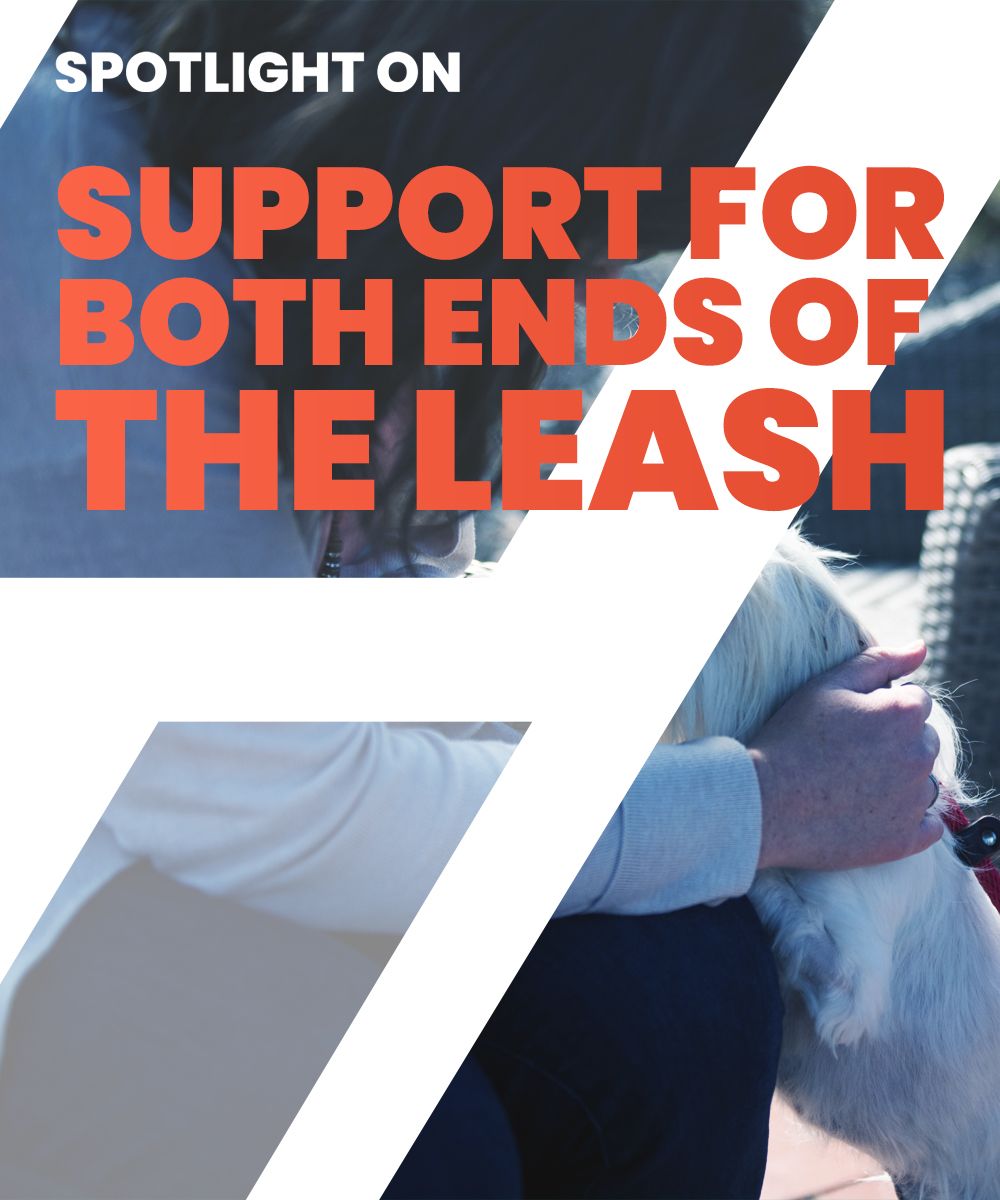

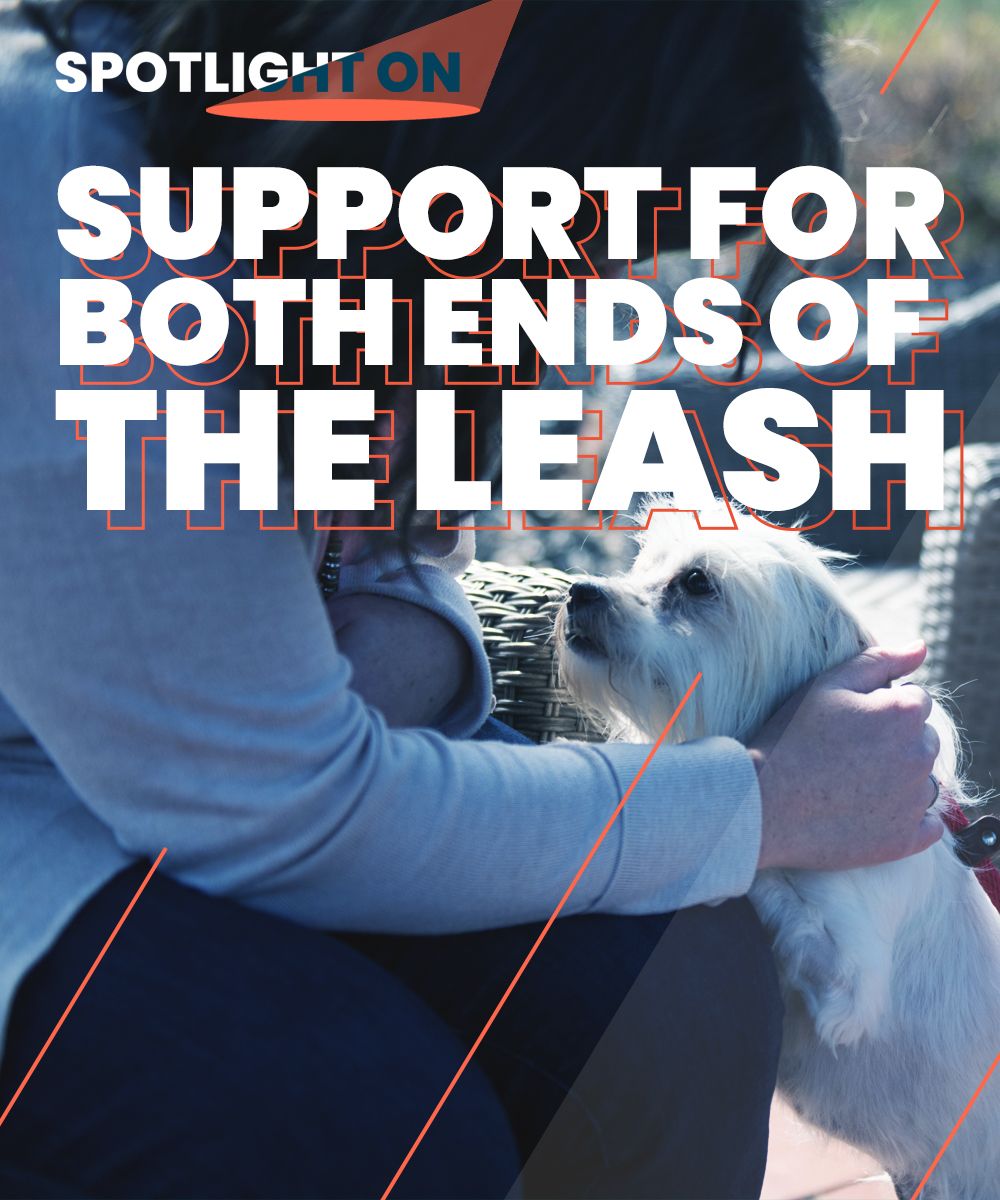
Not only did the Animal Rescue League build programming and infrastructure to support animal welfare, but it also developed more programs and services geared toward individuals and families, and even collaborates with other health and human service agencies in the county.
The Pet Help Center, opened in 2021, provides a safe space for pet owners dealing with temporary hardships like health, safety or financial struggles. Through its network of resources, the staff members at the Pet Help Center counsel families on available options to keep their family together and may be able to facilitate vet care, pet food/supplies and emergency support services for pets in need. Surrender isn’t the only option for a temporary problem, the Animal Rescue League staff wants pet owners to know that human-animal support services are available.
Another highly successful initiative was the Animal Rescue League Book Buddies program. First-grade through eighth-grade children practice their reading skills by reading out loud to cats in the shelter. The cats provide a non-judgmental and enthusiastic audience as they are soothed by the rhythmic sound of the children reading stories. Established in 2013, Book Buddies quickly gained national recognition and became a beloved program among school-aged children in Berks County and beyond.

Additional community programs include Seniors for Seniors, which encourages senior pet and human companionship with free adoptions; Jackson Galaxy’s Cat Pawsitive, a life-saving initiative designed to keep shy adoptable cats engaged and more attractive to adopters by teaching them tricks; and Patriotic Paws, which offers free adoptions for veterans.
Today, honoring and proliferating the animal-human bond is at the heart of the Animal Rescue League’s work as it continues to evolve and grow to meet the over one-hundred thousand calls each year.
“We saw just how deeply the human-animal bond mattered during the COVID pandemic as people raced for the support that animals provide during the most challenging of times. Those bonds of love and friendship are truly priceless. And I think people understand that deep connection when it comes to their relationship with their own pets.“ says Alexis. “And that’s exactly the type of bond we honor and champion, and it reflects the matchmaking we do here. The number of soulmate connections we see pass through this place… These bonds are incredibly special and we want to do more of that while helping keep pets who already have loving homes with their families who just need a little helping hand to get through a tough time.”
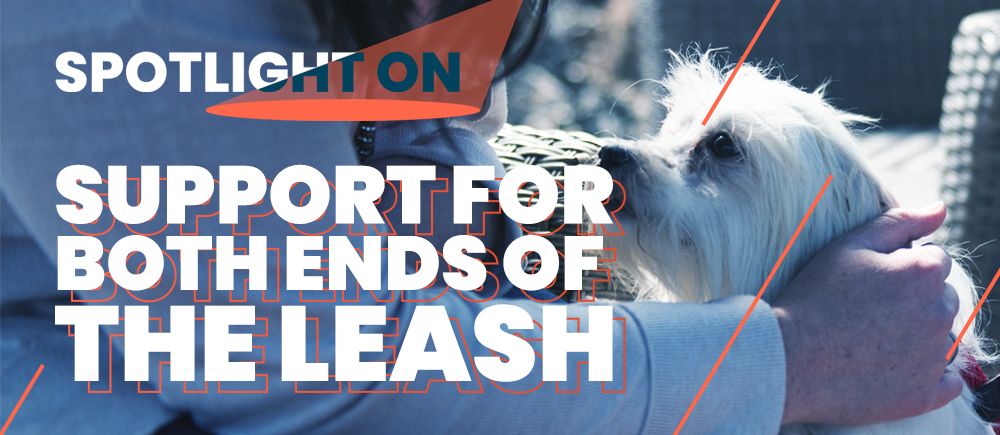
Not only did the Animal Rescue League build programming and infrastructure to support animal welfare, but it also developed more programs and services geared toward individuals and families, and even collaborates with other health and human service agencies in the county.
The Pet Help Center, opened in 2021, provides a safe space for pet owners dealing with temporary hardships like health, safety or financial struggles. Through its network of resources, the staff members at the Pet Help Center counsel families on available options to keep their family together and may be able to facilitate vet care, pet food/supplies and emergency support services for pets in need. Surrender isn’t the only option for a temporary problem, the Animal Rescue League staff wants pet owners to know that human-animal support services are available.
Another highly successful initiative was the Animal Rescue League Book Buddies program. First-grade through eighth-grade children practice their reading skills by reading out loud to cats in the shelter. The cats provide a non-judgmental and enthusiastic audience as they are soothed by the rhythmic sound of the children reading stories. Established in 2013, Book Buddies quickly gained national recognition and became a beloved program among school-aged children in Berks County and beyond.

Additional community programs include Seniors for Seniors, which encourages senior pet and human companionship with free adoptions; Jackson Galaxy’s Cat Pawsitive, a life-saving initiative designed to keep shy adoptable cats engaged and more attractive to adopters by teaching them tricks; and Patriotic Paws, which offers free adoptions for veterans.
Today, honoring and proliferating the animal-human bond is at the heart of the Animal Rescue League’s work as it continues to evolve and grow to meet the over one-hundred thousand calls each year.
“We saw just how deeply the human-animal bond mattered during the COVID pandemic as people raced for the support that animals provide during the most challenging of times. Those bonds of love and friendship are truly priceless. And I think people understand that deep connection when it comes to their relationship with their own pets.“ says Alexis. “And that’s exactly the type of bond we honor and champion, and it reflects the matchmaking we do here. The number of soulmate connections we see pass through this place… These bonds are incredibly special and we want to do more of that while helping keep pets who already have loving homes with their families who just need a little helping hand to get through a tough time.”

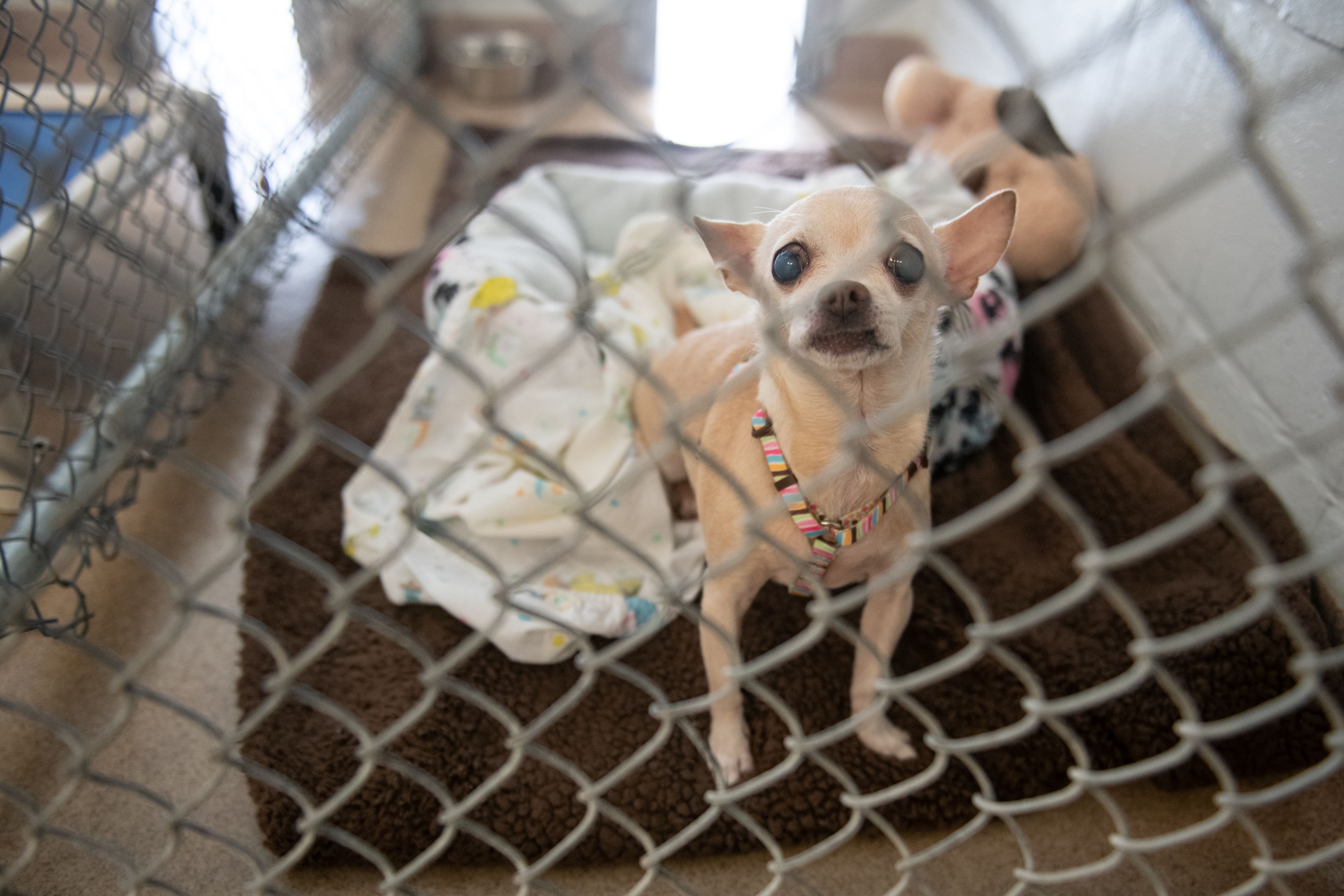
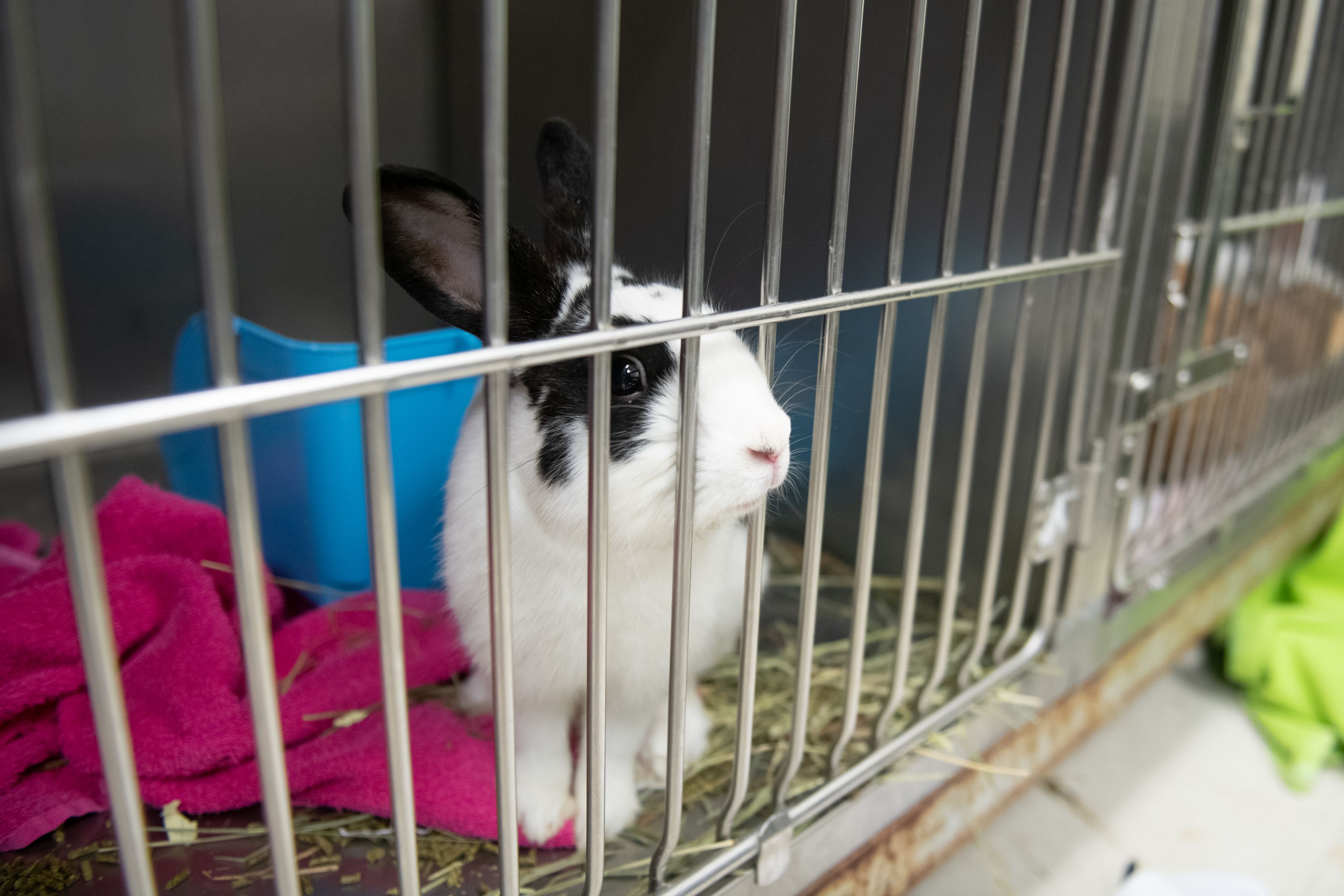
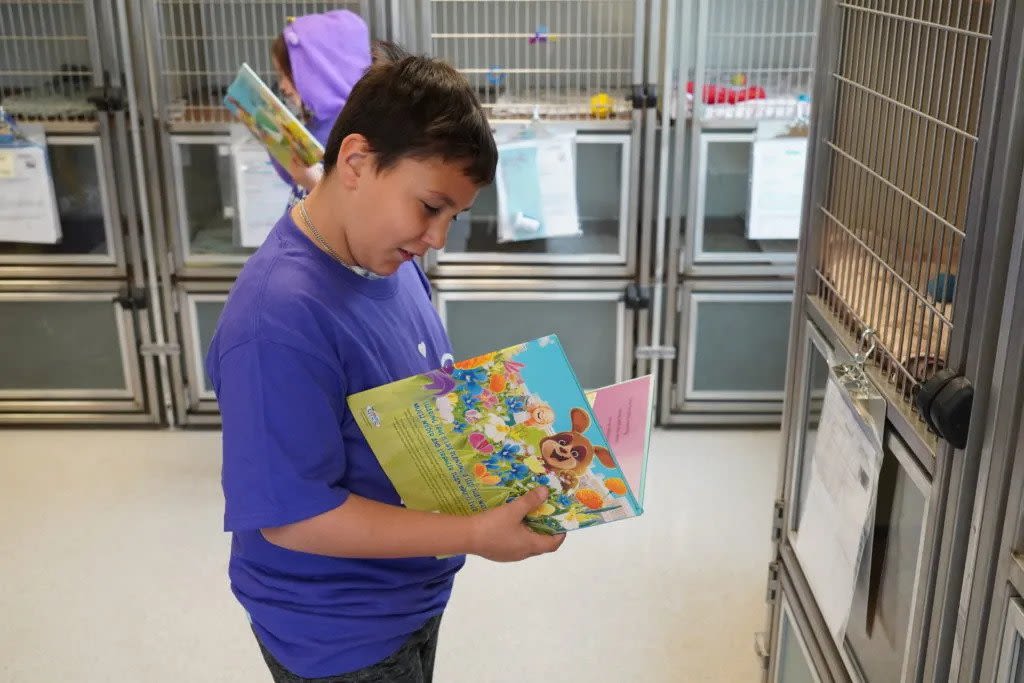
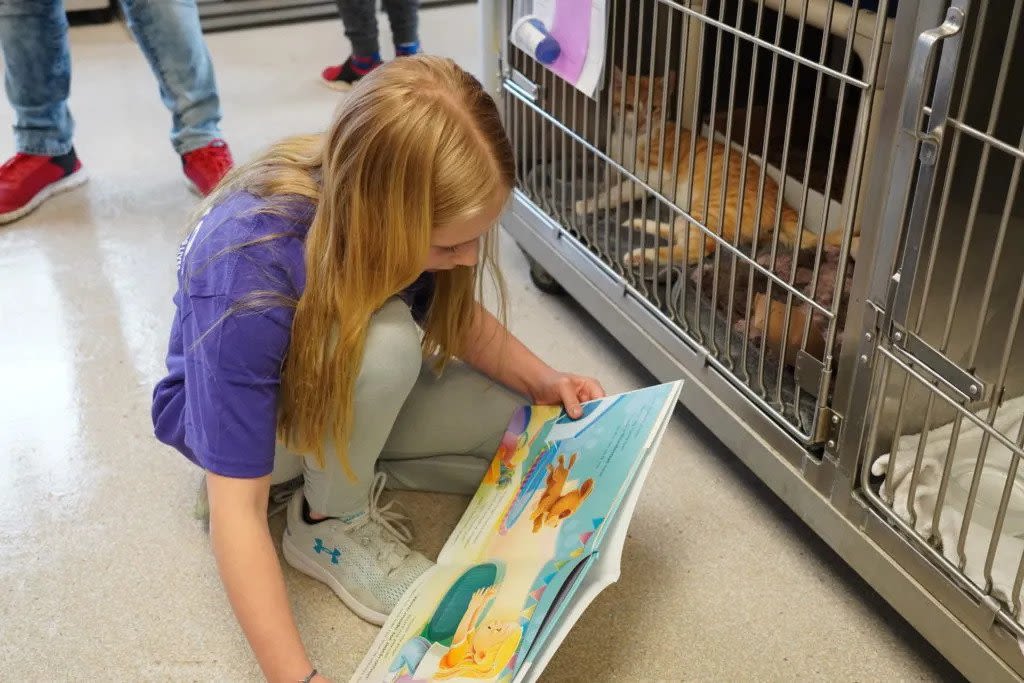
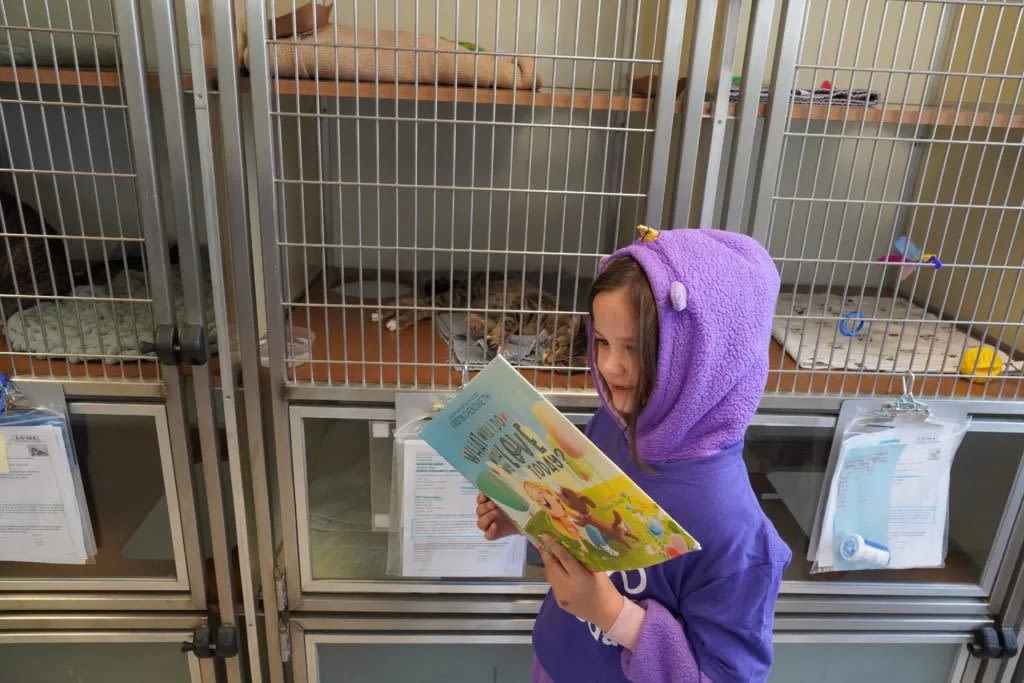
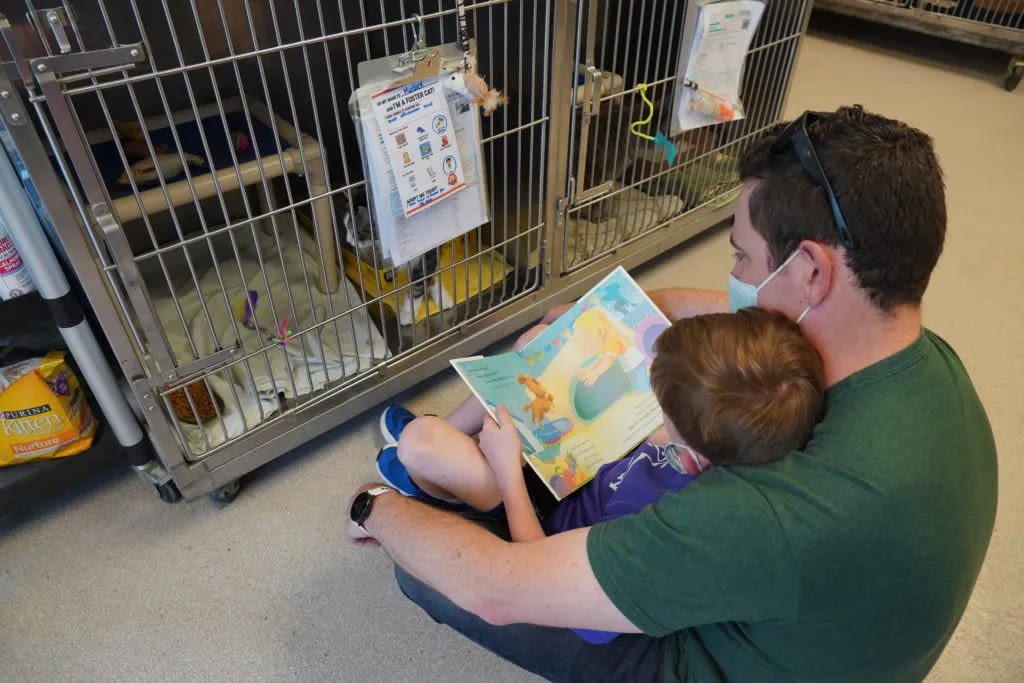

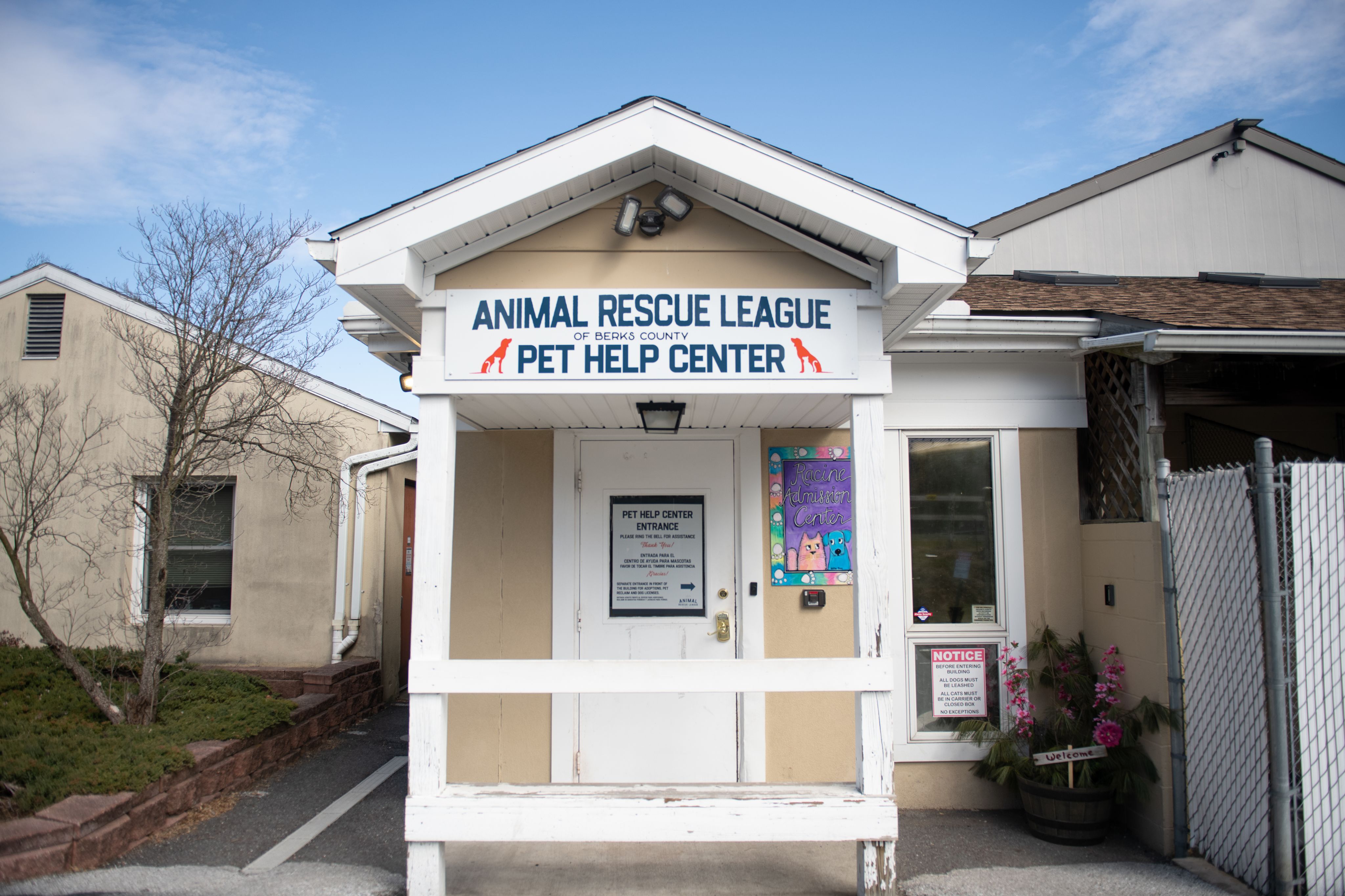
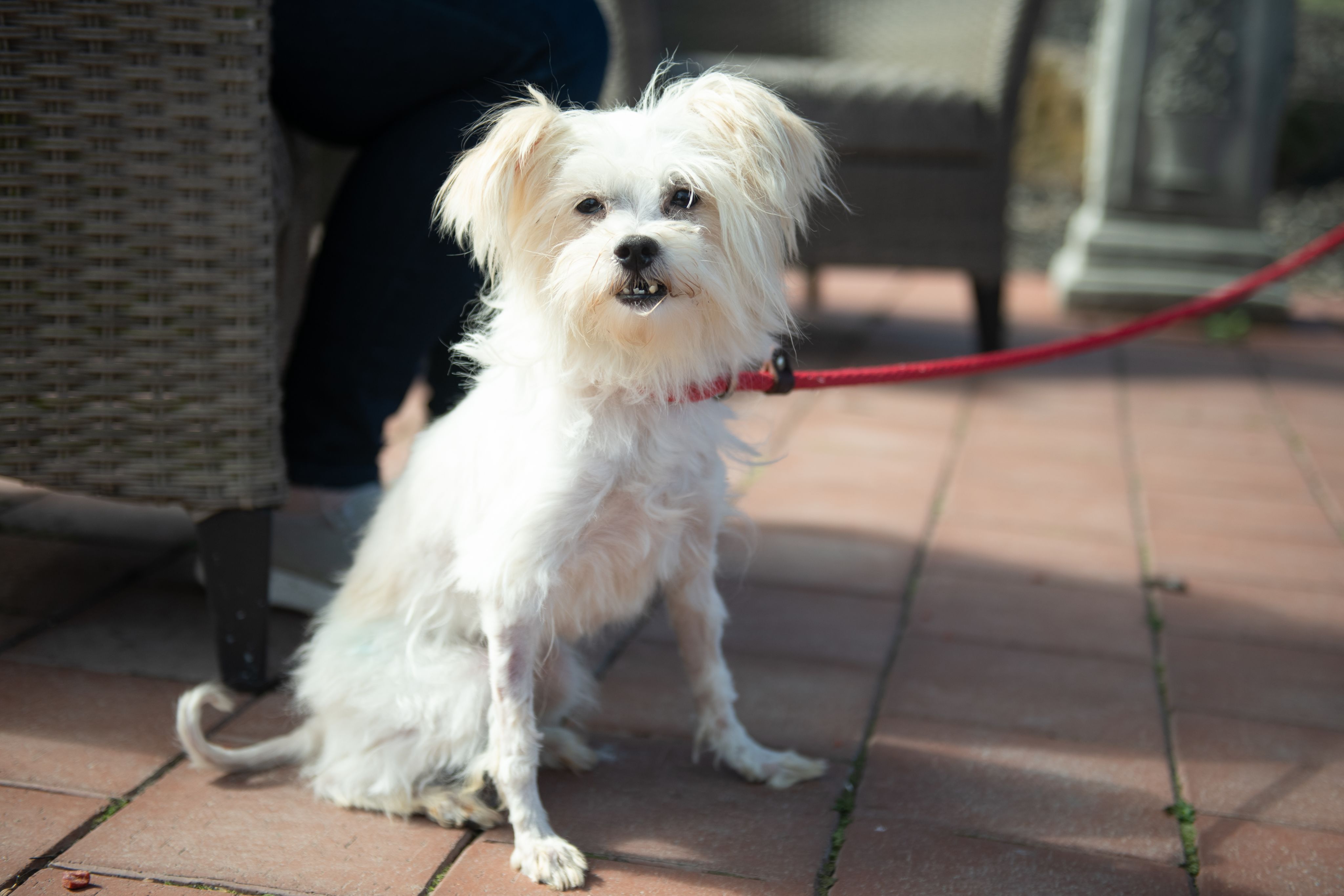










Contrary to popular belief, the Animal Rescue League does not receive local or federal government funding for its services or programs and is a private charitable organization. Even the municipal animal control contracts that ARL offers only cover about 20% of the program costs due to municipal funding challenges. Instead, it relies on donations, legacy gifts/estate planning, grants, shelter/surgical fees and sponsorship programs to operate the facility, care for the animals and pay its staff.
“I'll tell you, I have never been more impressed with a community's level of support through legacy gifts than I have been here. The Animal Rescue League’s 70-year existence is a testament to the depth and commitment that the local community has for Berks County and it’s really beautiful to see how those gifts have literally sustained this organization over time,” Alexis said with a smile.
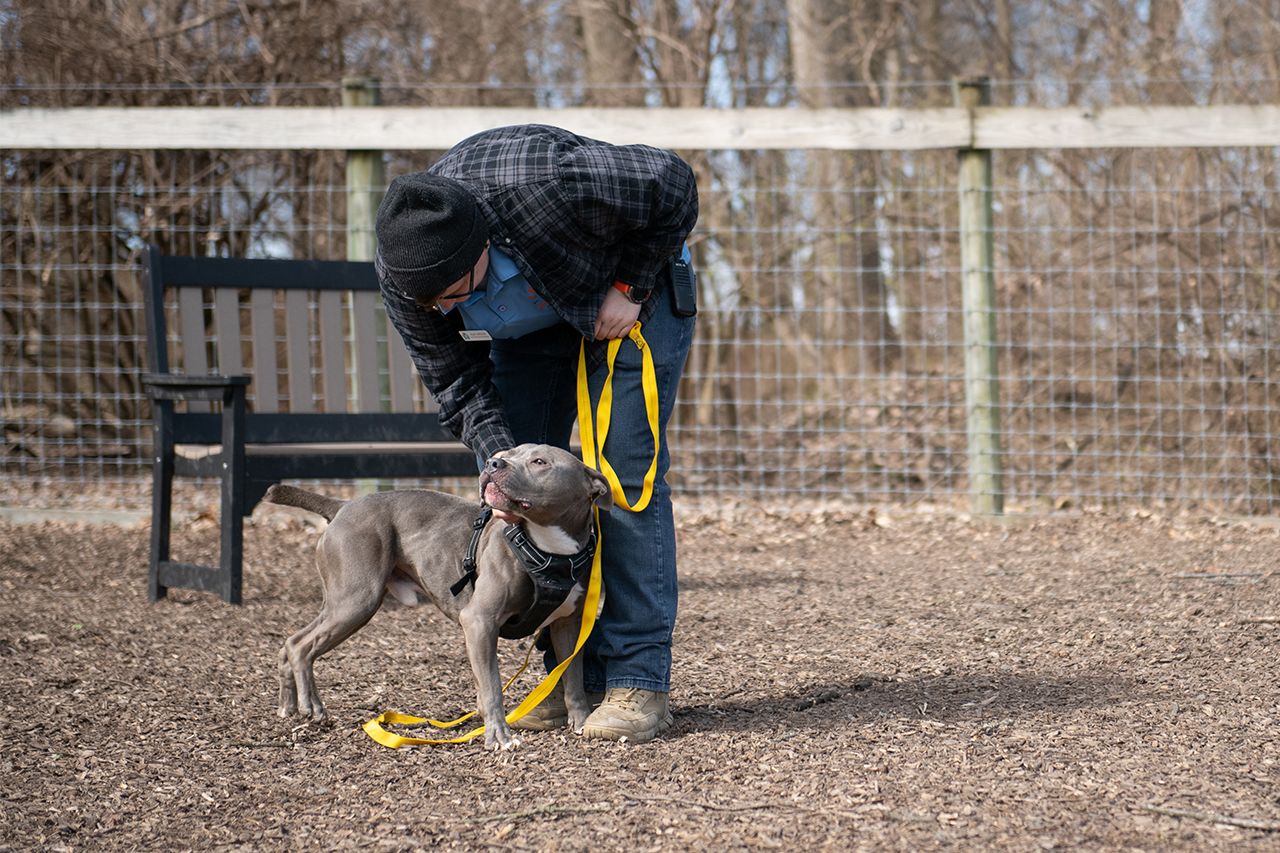
Now, with the shelter model change to a lifesaving focus that requires far more resources, the organization is on a quest to support its work by diversifying and expanding its funding streams. To support the modernization while offering many areas to inspire people’s passions, the Animal Rescue League rolled out a revamped corporate sponsorship package in 2021, which has had a tremendous impact on its ability to help more people and animals.
Local business thrives on its connections with the surrounding town and neighborhoods; the leadership team knows that Berks County organizations want to connect with current and potential customers in tangible and meaningful ways. Through corporate sponsorships, the Animal Rescue League receives desperately needed support and supplies while businesses and their employees enjoy fun, rewarding experiences with animals and the community.
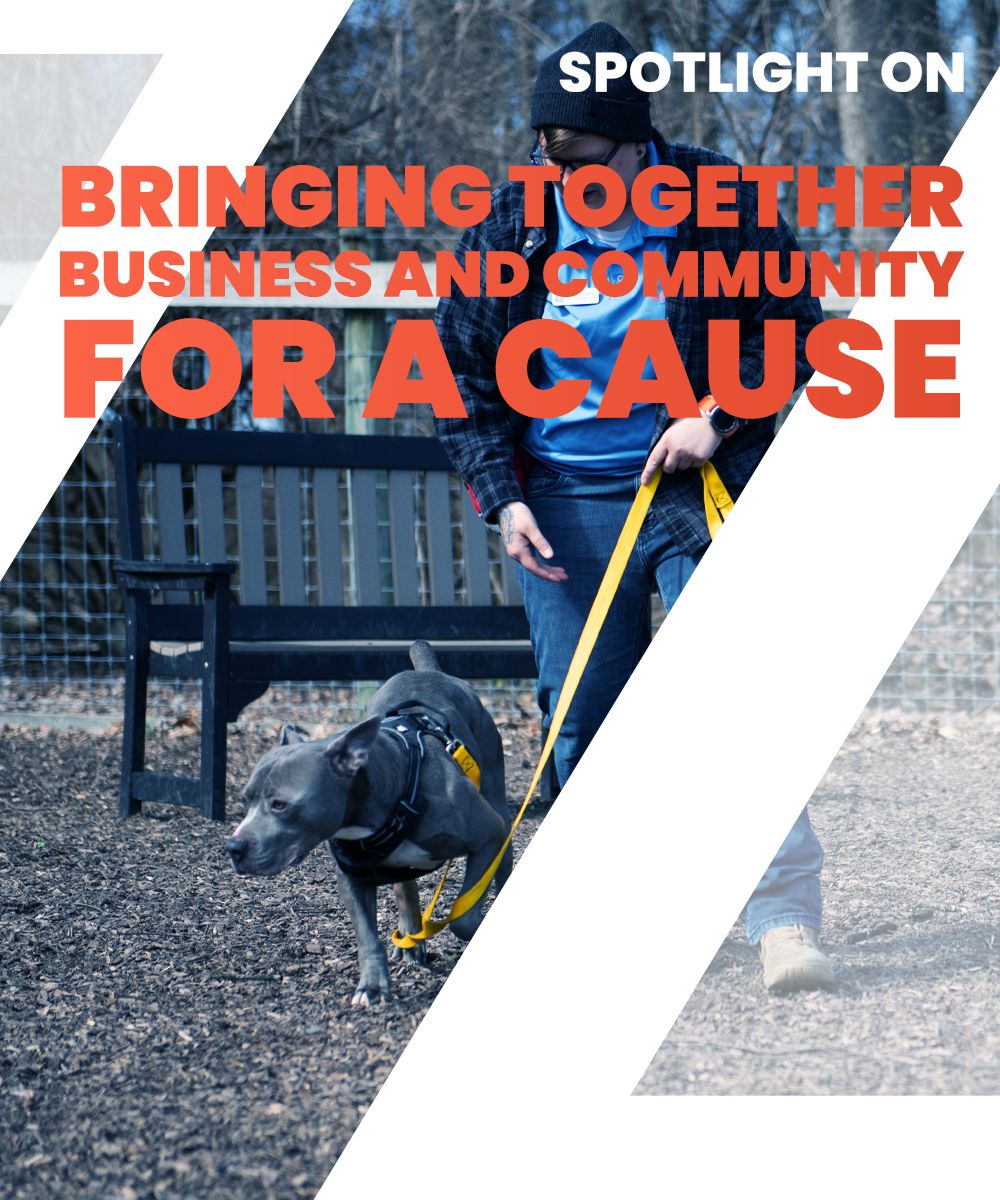


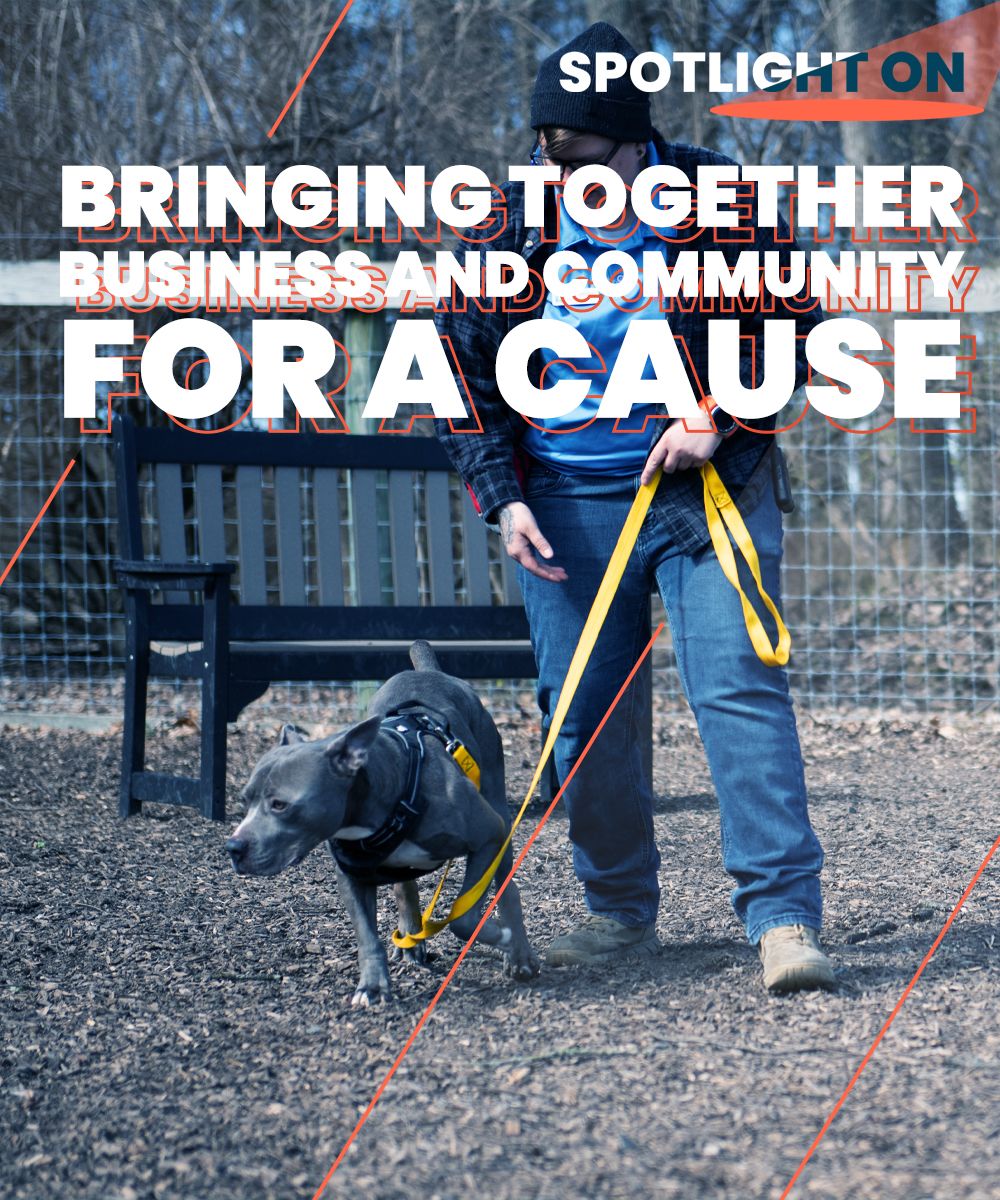
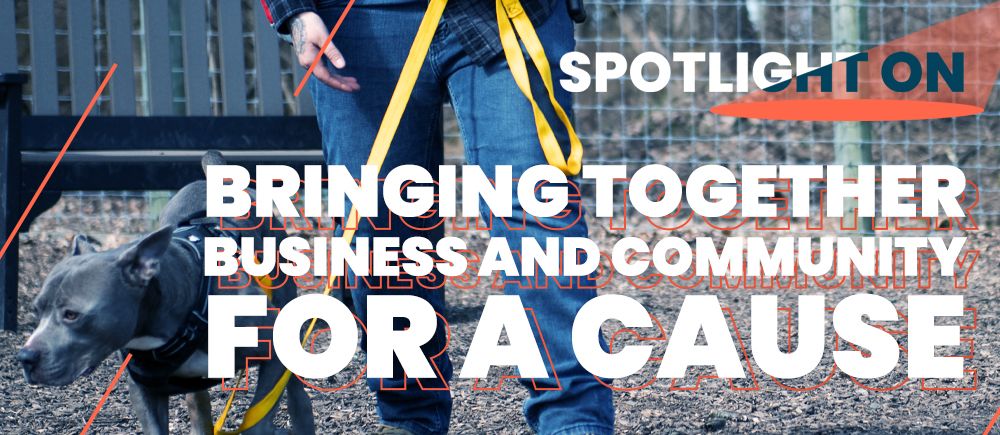
Contrary to popular belief, the Animal Rescue League does not receive local or federal funding for its services. Instead, it relies on donations, legacy gifts, estate planning and sponsorship programs to operate the facility, care for the animals and pay its staff.
“I'll tell you, I have never been more impressed with a community's level of support for an organization like Animal Rescue League than I have been here. The Animal Rescue League is a testament to the depth and the commitment that the local community has for Berks County,” Alexis said with a smile.

In an effort to shore up the foundations of the organization and stabilize its funding streams, the Animal Rescue League rolled out revamped corporate sponsorship packages in (YEAR), which has had a tremendous impact on its ability to help more animals.
Local business thrives on its connections with the surrounding town and neighborhoods; the leadership team knows that Berks County organizations want to connect with current and potential customers in tangible and meaningful ways. Through corporate sponsorships, the Animal Rescue League receives desperately needed support and supplies while businesses and their employees enjoy fun, rewarding experiences with animals and the community.

Innovation on the Horizon
The Animal Rescue League has some exciting initiatives rolling out. Most notably, early next year, it will begin utilizing a brand-new, mobile pet “bus” to safely host adoptions, vaccination clinics, and more out in the community. Transportation can be a barrier to pet care and adoption; especially when taking into account the Animal Rescue League’s current location on the outskirts of Reading. The leadership team is also considering the long-term vision for the organization and exploring strategies that will set it up for success in the next 20, 30 or 40 years—but that’s a story for another day.
It’s been a challenging road for the Animal Rescue League, especially over the past few years—its story is marked by grit and determination, a true definition of the phrase “blood, sweat and tears.” But it’s also a story about what happens when we get to the other side of the storm. It’s a story about the hope of redemption, the power of community, the unbreakable bonds of love, and, perhaps most important, the big impressions that little paws leave on our hearts.

Interested in learning more about a GRCA membership and a chance to be featured in an upcoming feature story?

